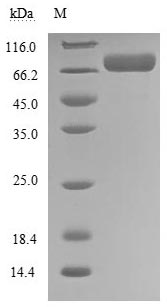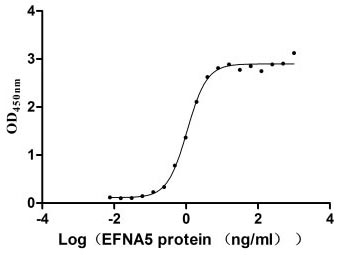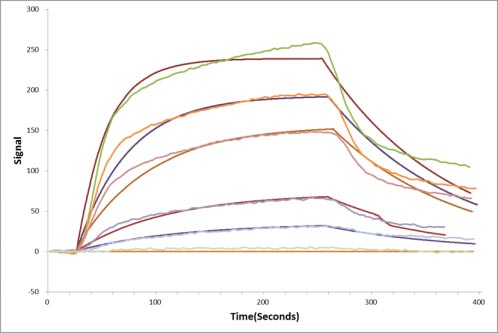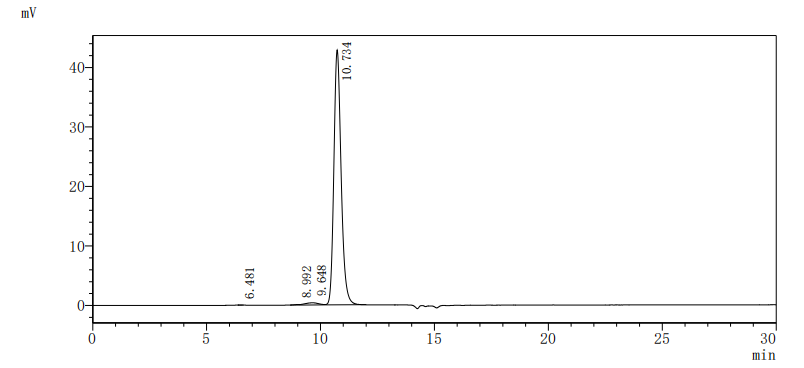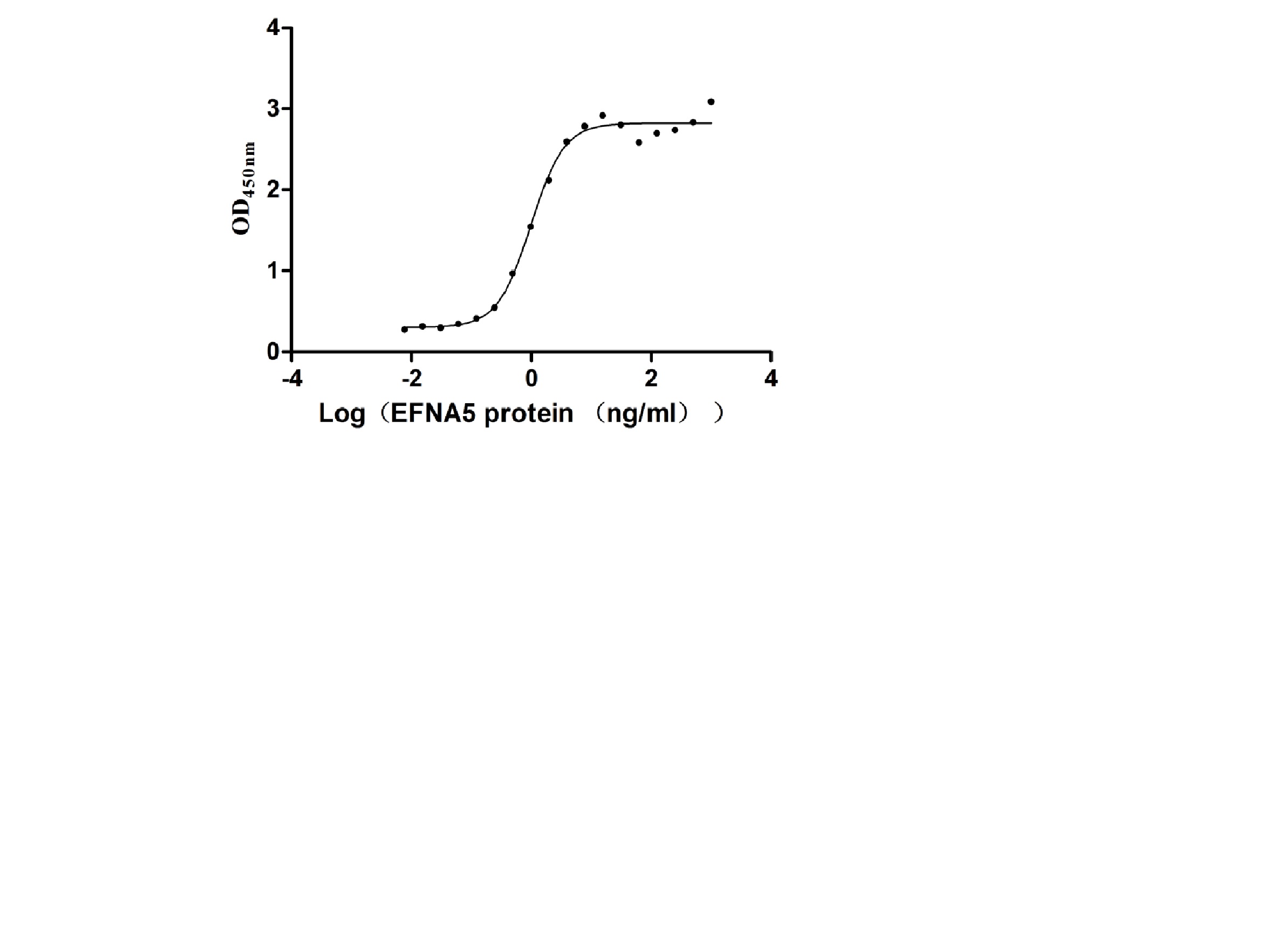The Human Ephrin Type-A receptor 3 (EPHA3) is a membrane tyrosine kinase receptor that promiscuously binds to ephrin family ligands. EPHA3 participates in migration and cell adhesion processes, thus mediating in the mesenchymal transition and the focal adhesion assembly. So it’s a known oncogene for colorectal cancer. This recombinant protein is expressed in mammalian cells and fused with a 6xHis-tag on the C-terminus. The expressed region is the 21-541aa of the human EPHA3 protein, with a molecular weight of 61 kDa. The purity of the final product is higher than 95%, as determined by SDS-PAGE. The biophysical parameters of this recombinant protein were tested with ELISA and LSPR. In the functional ELISA, this recombinant protein has an EC50 of 0.9734-1.179 ng/ml for the binding with human EFNA5. LSPR determines the affinity constant for the binding with human EFNA5 is 13.8 nM. This protein product can be used in ELISA and Surface Plasmon Resonance to determine the presence and concentrations of their ligands in the sample and as a control for ligand binding assays. It also can be used as an immunogen to immunize the rabbit or other animals to get corresponding antibodies and is applied to immunological studies related to immune response pathways. The final product has low levels of endotoxin, with less than 1.0 EU/µg as determined by the LAL method.


